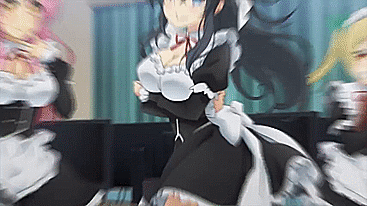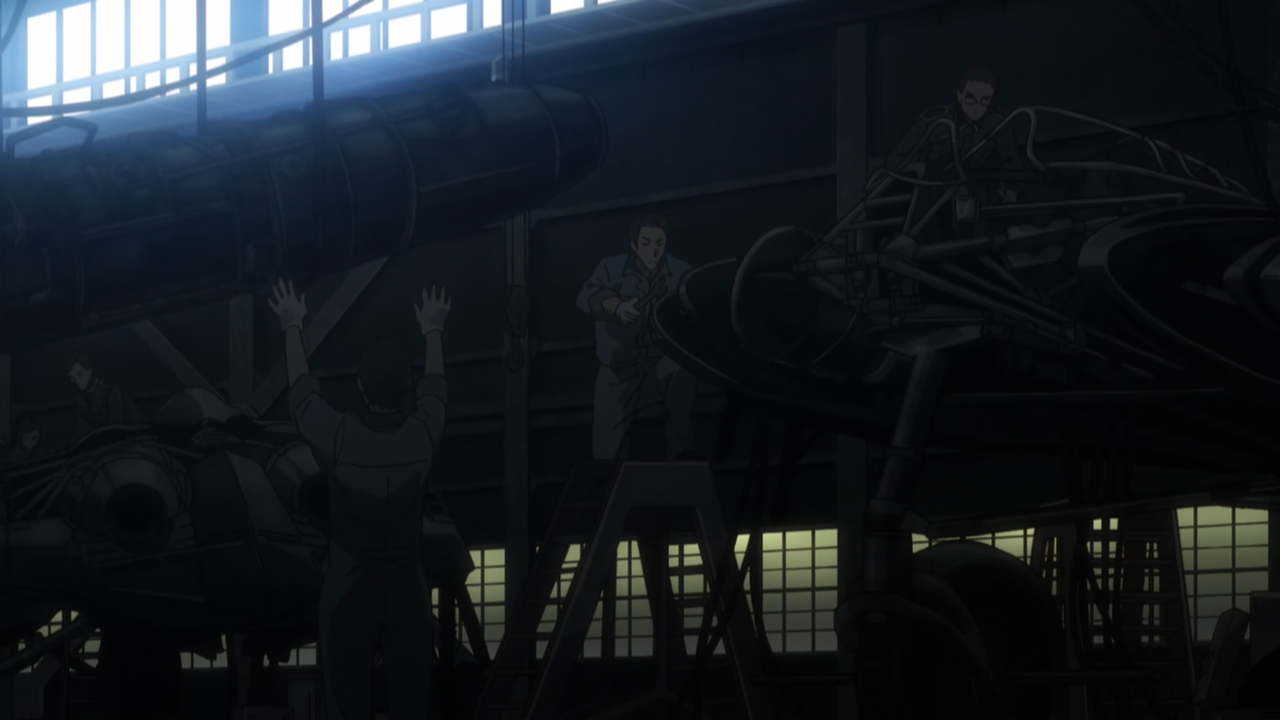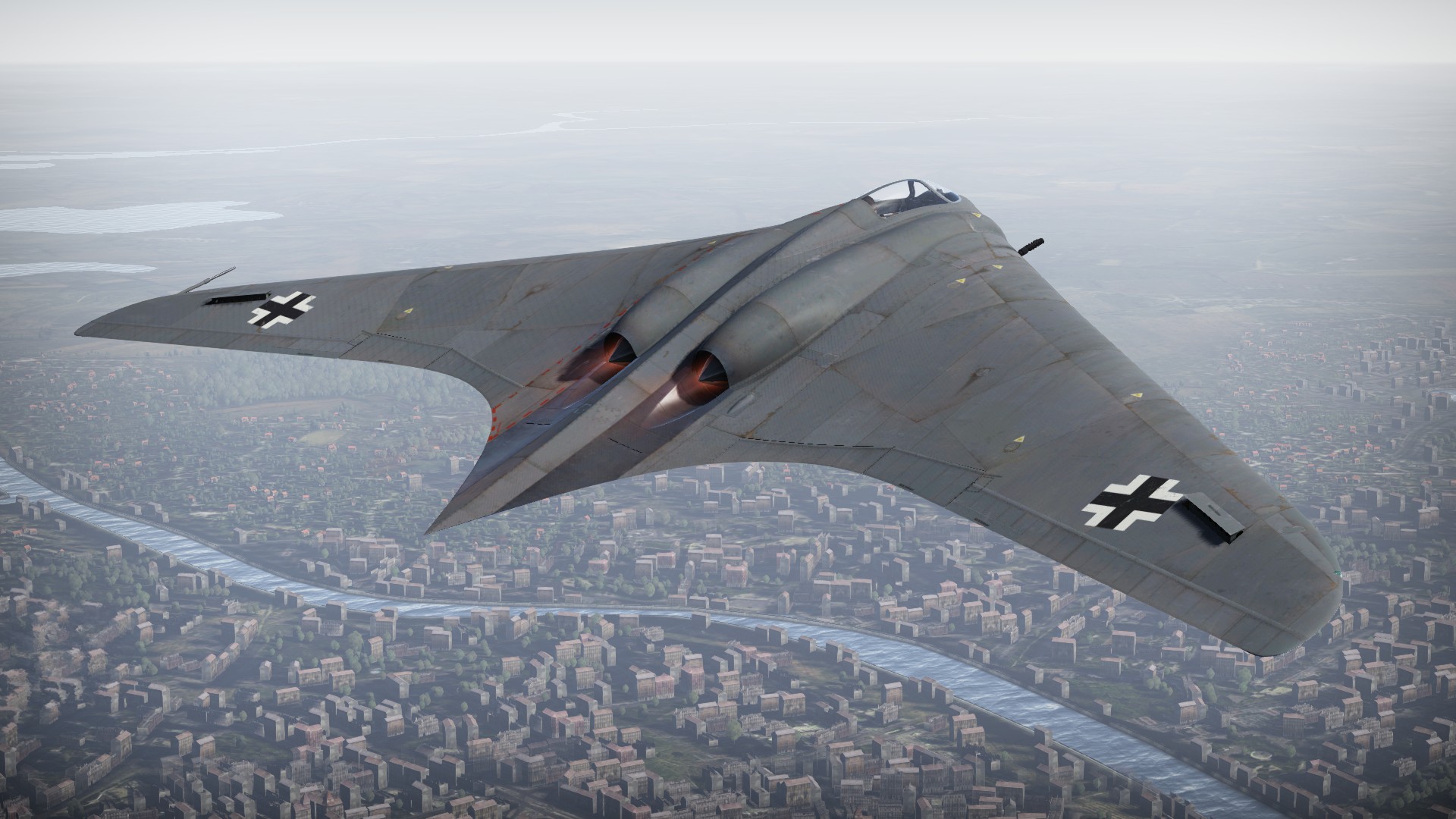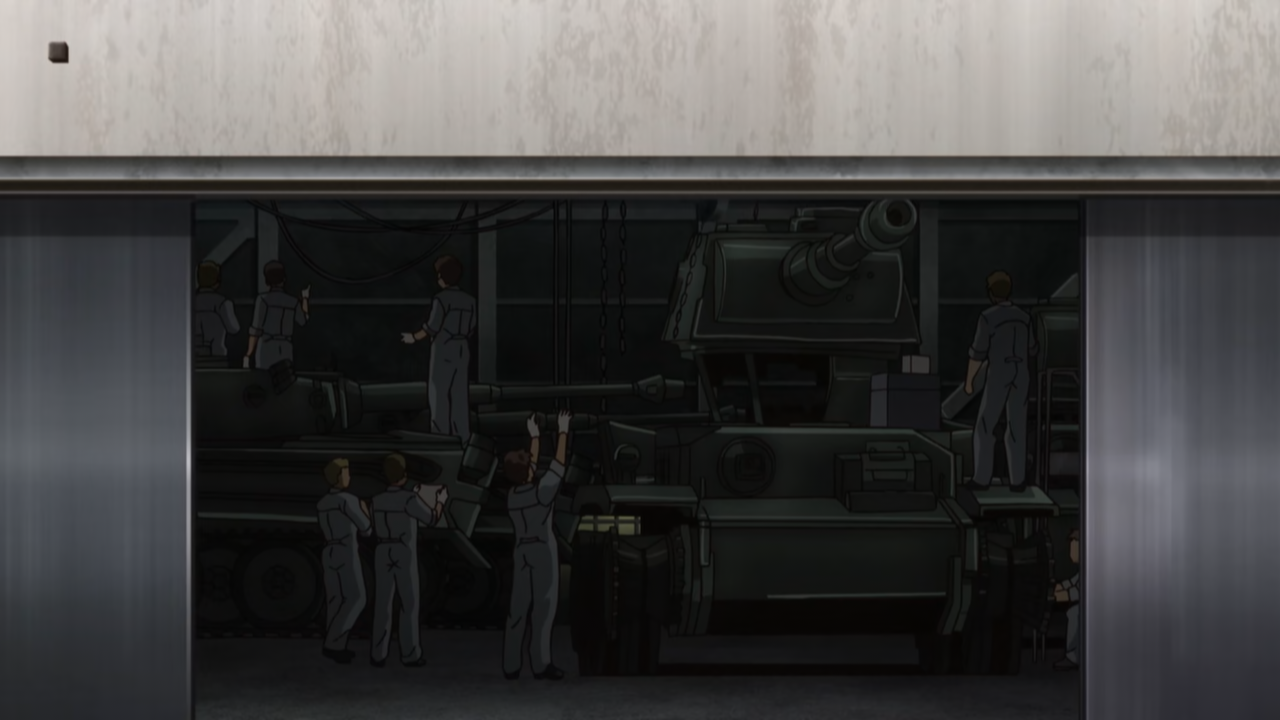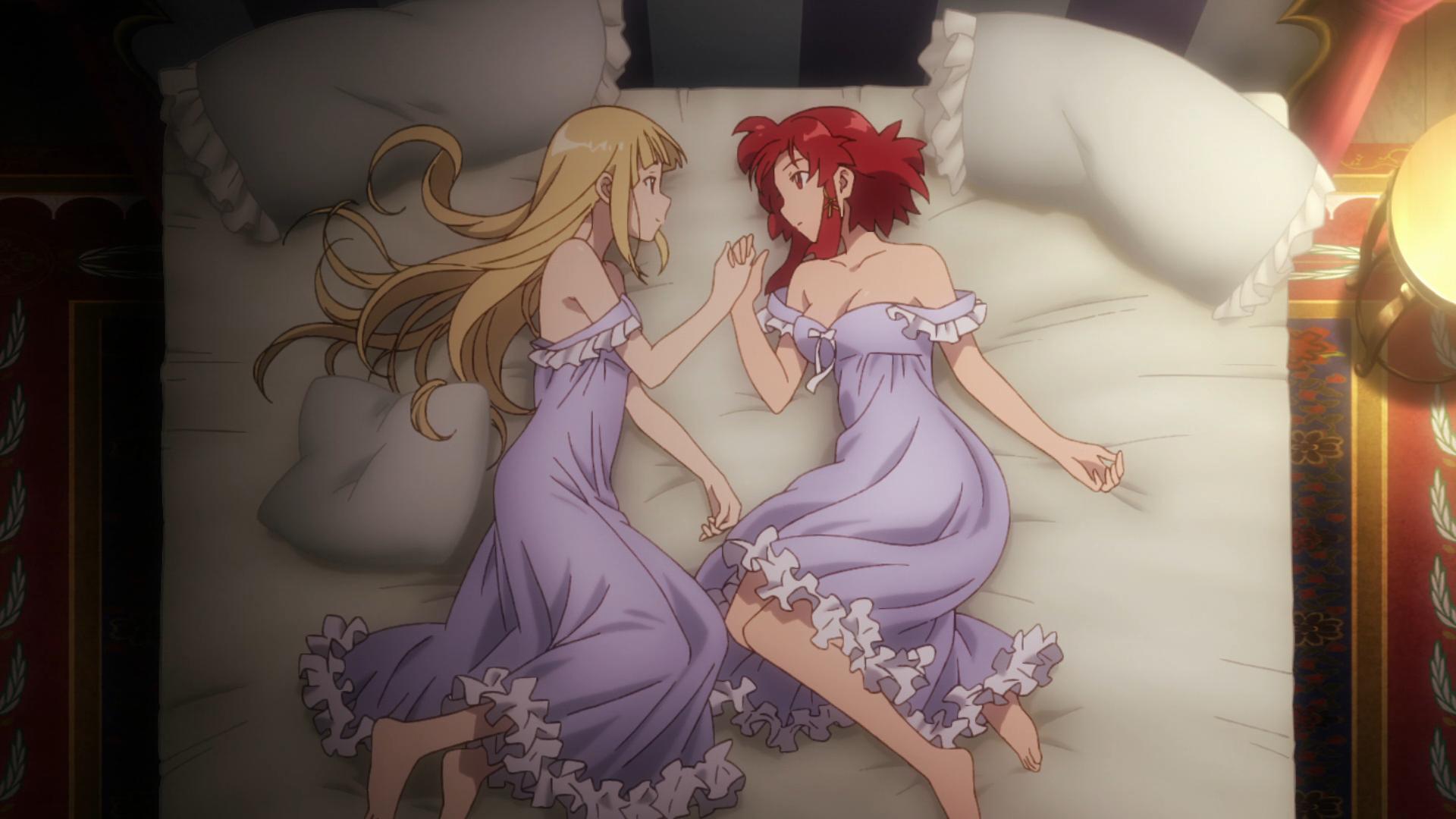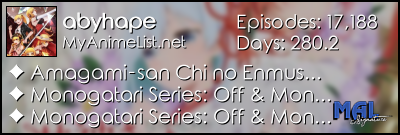Shuumatsu no Izetta Episode 7 “The Battle of Sognefjord”: 8/10
After painting an intricate picture of the war and its central characters back in Eylstadt, Shuumatsu no Izetta finally turns to the development of the promised offensive. This is, after all, an anime about World War II, and the show has been much more of a discussion about people and power than a depiction of mid 20th-century army-on-army action. While there’s certainly nothing wrong with the latter, Shuumatsu no Izetta’s approach is more convincing; my personal taste for character-driven narratives aside, the deeper the connection developed between the viewer and the warring parties, the more effective the driving punch of the story. Despite this initial character focus, the plot has turned to true, dedicated warfare, and our first glimpse of the struggle in earnest is the Eylstadtian bid for British help.
There’s a lot at play in this opening scene of the British war room, and the elements of this sequence come together pretty convincingly, for the most part. The quirky, personal depictions of representatives from different nations and how they symbolise their national spirit is more likely to be silly jabs than genuine commentary, but is just subtle enough to be well executed. The real meat of the scene, however, does a very good job of pulling us back into the center of the narrative. “Otto’s game” is an excellent way of portraying the nature of the German enemy: to the Allies, the battlecruiser is a key strategic element, whereas the eponymous Otto van Bismarck manipulates it like a pawn to be sacrificed. We even get a reminder of this disparity after the ship is destroyed, when our favorite Germanian villain announces the mission a success. While the destruction of the cruiser was an essential objective for the Britannians, the massive Germanian war machine is willing to trade it away for a little crucial information. This discussion of the closing trap is rather effective in reminding us of the desperation little Eylstadt and its potential Brittanian buddy face.
However, the most interesting element of the sequence comes with the diplomats’ dismissal of Izetta as a “real” witch rather than a media ploy. This is nothing new to our story: Germanians and Eylstadtians alike have dismissed Izetta, first on the basis that war is a matter of “iron,” not magic, second for the impossibility of witches in a “modern age.” This everpresent scorn, paired with Izetta’s ethereal entrance, paint the witch and the princess as entities that exist outside of war: the silvery witch and the commanding ruler, floating through the sky above the brutality of trench warfare to save a small, helpless country. In fact, this otherworldliness is part of what separates our two protagonists from the Germanian enemy; the weapons that give the Germanian army power are demonstrations of raw mechanical might and industrial prowess, while Eylstadt’s key weapon is a powerful girl entangled in morals and duty who can’t see herself as a weapon at all. Furthermore, Izetta’s disconnection from the brutal reality of war is part of her dual identity, in that the strategists of Eylstadt must create a weaponised persona to replace the far more complex and personal witch. Again and again, the writers tell a tale of the two worlds of war: one of personal, morally invested love and dedication, and one of mechanical, strategic destruction.
That isn’t to say this construct doesn’t have problems. In fact, the majority of the guilt for Izetta’s actions is sloughed onto the strategists. Instead of Izetta facing real moral qualms about the destruction of Germanian lives, her actions are quickly explained away by her dedication to the princess. This episode alone, we are reminded of Izetta’s powerful motivation twice: first, she swears her unwavering allegiance to the princess personally in a very intimate, but refreshingly fan-service-free segment; second, she describes how the protection of Eylstadt gives her the opportunity to use the “power everyone hated” for good. Is this enough to brush aside the moral weight of waging war? Instead, the blame of wartime destruction is transferred to the Eylstadtian ministers organising the war effort. Especially after the characterisation of Izetta as a deeply caring, morally thoughtful individual, the shallowness of her empathy for Germanian losses is a rather weak component of the narrative.
All this being said, the titular destruction of Sognefjord’s Germanian warship is the true central focus of this episode. The truly striking component of this scene is the animation, which toes the line between remarkable and stellar. The suggestive camera angles mysteriously highlighting the young witch’s bust are scrapped in favor of significantly more exhilarating, action-oriented perspectives; the dramatic, squinting eyeball zoom-ins come at the right times and are sparing enough so as to not disrupt the pacing of the battle; and Izetta’s choice to take risk and offer sacrifice inspires genuine excitement. That’s not to say the scene was perfect; while I hate to criticise a story on its plausibility, the plot armor is maybe slightly too powerful here, and the suspense of the scene would have been heightened had the Germanian pilots been able to aim. Demerits aside, the animation and pacing was enough to pull even this pretentious reviewer to the edge of their seat.
A few notes:
-While obvious, the end of this episode did give us some genuine character empathy with a Germanian character for the first time. True, going out and proving oneself is almost as overused as it gets, but some understanding of the human motivations of the previously mechanical Germanian technocrats is welcome.
-In Izetta’s conversation with the pilot, our witch’s dedication to the protection of Eylstadt takes on a whole new dimension. After years of isolation and others’ hatred of her magical abilities, Izetta is suddenly able to use her power in a way that people accept and commend - protecting Finé, the person who first accepted her for who she was. It’s paramount that Izeta’s unwavering commitment to the cause doesn’t become unbelievable, and this added layer of personal importance certainly helps in that regard.
-------------------------------------------------------------------------------------------------
Check out my blog at https://hyperreviewsanime.wordpress.com/ and the reddit post at https://www.reddit.com/r/anime/comments/5d768w/spoilers_shuumatsu_no_izetta_episode_7_review/ |

